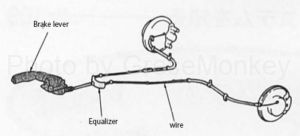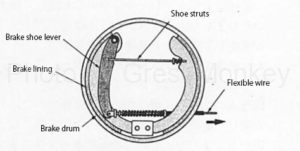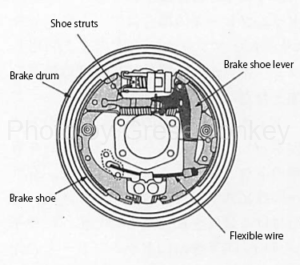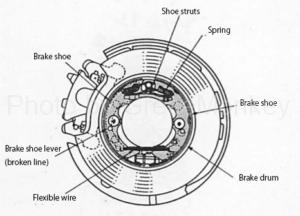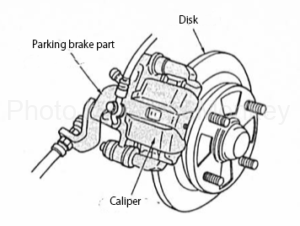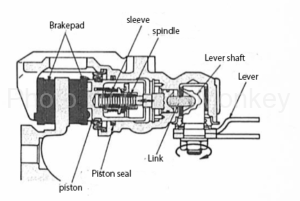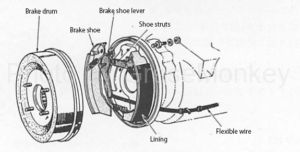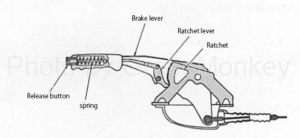About automobile parking brake
Needless to say, parking brake (parking brake) is a brake to prevent the car from moving in parking lots and the like. An operating mechanism that transmits operating force using a wire or the like, and a brake main body that generates a braking force by receiving the force.
Although it seems to be difficult to explain like this, simply adding the brake shoe of the rear wheel drum brake not mechanically but the foot pedal.
In the case of a disc brake, there are two methods, one having a drum brake mechanism dedicated to the parking brake and the other one adding a device for mechanically pressing the piston against the disc. The operation of the drum brake exclusive for parking brake is basically the same as ordinary drum brake.
The operating force applied to the brake lever is equally distributed to the left and right by means of an equalizer so that the brakes on the left and right wheels are correctly distributed at the same time.
Table of Contents
Parking brake body
Drum type
In the case of a drum type, the flexible wire transmitting the operating force of the brake lever pulls the wire of the brake shoe so that the shoe strut pushes one brake shoe, and the other brake shoe is also pressed against the drum by the reaction force . (See Fig. 1) Actually, the part that works will be like the one shown in Fig.
The disc brake with the drum brake exclusive for the parking brake is as shown in Fig. 3, and the drum brake is incorporated in the center part of the disc. Also called drum in disc brake system.
Disc type
A parking brake of a system which mechanically presses the piston against the disk is as shown in FIG. 4. When the internal structure is seen in cross section, as shown in FIG. 5, when the brake lever is pulled, the lever moves by the wire and the lever shaft Rotate. Then, since the link moves while the piston rotates in the direction of the arrow via the spindle, the pad is pushed against the disc rotor to perform the braking action.
When the brake pad wears, the internal automatic adjustment device adjusts the parking brake pulling margin
The method of mechanically pressing the piston against the disk can only be used for the floating caliper type in view of its structure. Therefore, in the case of the opposed piston type caliper, it is a drum-in disc brake system having a drum brake exclusive for the parking brake. In other words, in the case of large passenger cars and high performance vehicles, which often use opposed piston type calipers, the drum-in disc brake system will be adopted.
Center type
The center type is used for trucks and buses, and a brake drum for parking brake is provided at the connection part with the propeller shaft at the rear part of the transmission. (See Fig. 6) The braking action is performed by expanding the brake shoe and crimping it to the drum, but the operation itself is the same as the drum type above.
Operating mechanism of parking brake
The operation mechanism of the parking brake includes a lever type, a stick type, a pedal type, and the like. In the past, there was a time when stick type was adopted more often due to column shift type shift operation, but (lever old middle truck etc.) Currently, lever type is used in shift operation of floor shift type many times.
In the lever type, as shown in FIG. 7, the brake is operated by pulling up the brake lever disposed on the floor inside the vehicle. The brake lever is designed to hold the condition of being pulled up by the catch of the ratchet lever catching on the ratchet. Therefore, in order to release the brake, it is necessary to push the release button slightly with the brake lever pulled and release it by removing the nail of the ratchet lever.
